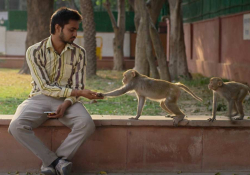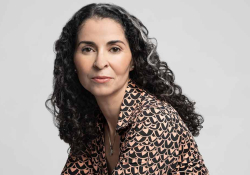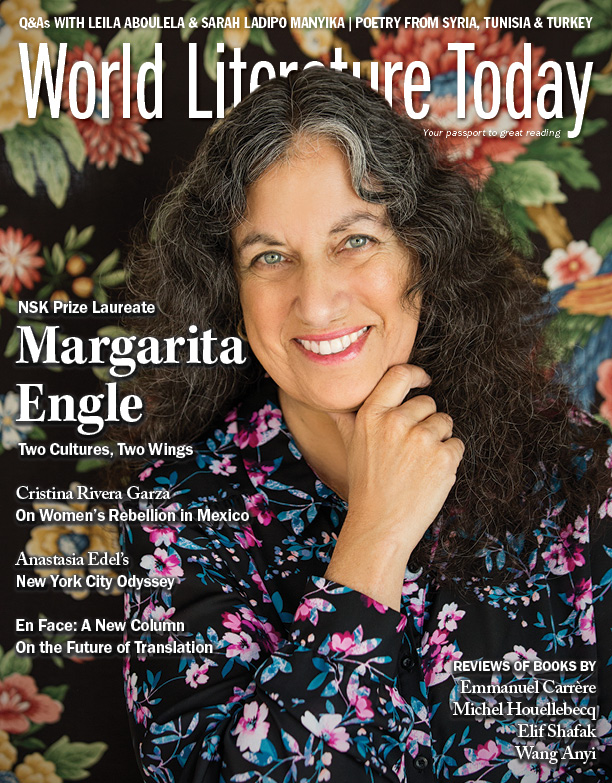Q&A with Illustrator Edel Rodriguez

 Emma M. Vandamme: You illustrated the cover and inside drawings of Enchanted Air, in which Margarita Engle tells her story of growing up between two cultures (Cuba and Los Angeles) during the Cold War. How did you try to represent this notion of interwoven cultures?
Emma M. Vandamme: You illustrated the cover and inside drawings of Enchanted Air, in which Margarita Engle tells her story of growing up between two cultures (Cuba and Los Angeles) during the Cold War. How did you try to represent this notion of interwoven cultures?
Edel Rodriguez: Having grown up in Cuba and then coming to America, I understand what it’s like to feel like one is floating between two lands, two cultures, two languages. The image of a bird flying between the two lands and sea below seemed like an apt metaphor. I added the girl’s face to one of the wings to give the viewer a more personal connection to the writer’s story.
Vandamme: Is contemporary cultural globalization in respect to diversity a theme you are often asked to work around?
Rodriguez: Diversity has been an increasing topic to illustrate over the last fifteen years. There have been more novels and children’s literature dedicated to telling the stories of the various cultures from around the globe. America has become a much more diverse country, and publishing editors are acknowledging the audience.
Vandamme: How long have you known you wanted to be an illustrator and not only to pursue drawing as a hobby?
Rodriguez: I went to college and studied painting and illustration. While in college, I illustrated for the school newspaper and the Village Voice. Once I saw my work in print, I was hooked on the idea of becoming an illustrator. I’ve been illustrating professionally since I left school twenty-five years ago.
Vandamme: In your illustrations, you seem to leave room for interpretation. How does an idea transform into the actual product on paper?
Rodriguez: I usually have a set of five to ten ideas for a book cover. They start off as small sketches, and I discuss them with the editors. I usually want room for interpretation, I welcome it. Books are unique, in that an illustrator doesn’t have to tell the whole story; an artist can hint at things. I want the reader to be intrigued by the cover, then go ahead and pick up the book and read to find out the rest of the story.
Vandamme: Do you think the future of the printed book is doomed?
Rodriguez: Artists are making, and book companies are publishing, books that are more beautiful, have unique finishes, and a unique design. These kinds of things have helped books make a comeback over the last several years. Many companies are reissuing older books with new and exciting covers. I think there’s a nice future for the printed book. My kids are avid readers, and they have yet to read a single digital book.
Vandamme: What was your strategy to establish your name in the field? What advice would you give to beginning artists?
Rodriguez: The most important thing is your work. Keep refining it and making it better all the time. Reach out to publishers you love, tell them how important they have been to you, and show them what you can do for them. In this digital age, it’s still important to make personal connections, so go to industry events, art openings, and publishing events, and introduce your work to editors. Book publishing is a wonderful industry, and editors are always receptive to new talent.
October 2019
 Cuban American artist Edel Rodriguez (b. 1971, Havana) has exhibited internationally. His artwork is in the collections of a variety of institutions, including the Smithsonian Institution in Washington, DC, and his illustrations appeared on the covers of the September 2006 and September 2010 issues of WLT.
Cuban American artist Edel Rodriguez (b. 1971, Havana) has exhibited internationally. His artwork is in the collections of a variety of institutions, including the Smithsonian Institution in Washington, DC, and his illustrations appeared on the covers of the September 2006 and September 2010 issues of WLT.












